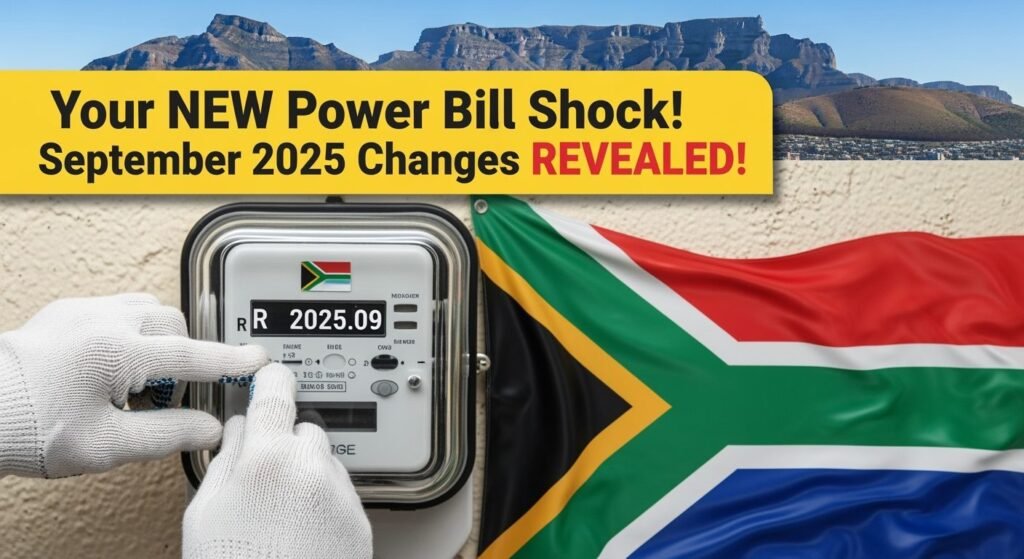Electricity Law Updates: As we approach September 2025, I want to make sure you’re fully informed about the significant electricity law updates that will affect your bills, rights, and services. The new regulatory framework introduces substantial changes to tariff structures, supply regulations, and enhanced consumer protections that every household and business should understand. These September 2025 electricity law updates represent the most comprehensive overhaul of the energy sector in the past decade, aiming to balance fair pricing with sustainable energy practices while strengthening your position as a consumer. Have you considered how these changes might impact your monthly expenses or your ability to choose energy providers?

What Are The Key Changes in Electricity Tariffs
The September 2025 electricity law updates introduce a three-tier pricing system that replaces the current flat-rate model. Under this new structure, consumption will be categorized as essential, standard, and premium usage levels, with progressive rates applied to each tier. I’m particularly impressed by the introduction of time-of-use pricing, which will offer lower rates during off-peak hours (typically 10 PM to 6 AM). For renewable energy users, the updates include enhanced feed-in tariff rates, increasing the compensation for excess electricity fed back into the grid by approximately 15%. The reforms also mandate transparent billing practices, requiring providers to clearly itemize all charges and provide comparative usage data from previous periods.
Why Consumer Rights Have Been Strengthened
The regulatory overhaul significantly enhances your rights as an electricity consumer. The most notable improvement is the establishment of an independent Electricity Consumer Advocacy Office with authority to resolve disputes, issue penalties to non-compliant providers, and advocate for consumer interests in future policy development. The updates also introduce a mandatory 30-day notice period for any price increases, giving you time to compare alternatives before changes take effect. I believe the most impactful change is the new “Right to Switch” provision, which eliminates early termination fees and caps the provider transition period at 14 days. Additionally, vulnerable consumers will benefit from expanded protection measures, including mandatory payment plan options and restrictions on service disconnections during extreme weather events.
| Consumer Right | Implementation Date |
|---|---|
| Independent Advocacy Office | September 1, 2025 |
| 30-Day Price Change Notice | October 15, 2025 |
| Right to Switch Provision | September 1, 2025 |
| Vulnerable Consumer Protections | November 1, 2025 |
How Supply Rules Are Changing
The September 2025 electricity law updates introduce stricter reliability standards for electricity suppliers. Companies must now maintain a 99.5% service reliability rate or face graduated penalties. The new framework also establishes a modernization mandate, requiring providers to invest at least 5% of annual revenue in grid infrastructure improvements and smart technology integration. For rural areas, the updates include special provisions to ensure equitable service quality, with suppliers now obligated to meet the same response time standards regardless of location. I’m particularly encouraged by the new transparency requirements, which mandate quarterly public reporting on outages, response times, and infrastructure investments, making it easier for you to hold your provider accountable.
 New Traffic Rules September 2025 – Motorists Advised to Learn Changes Before Daily Commute
New Traffic Rules September 2025 – Motorists Advised to Learn Changes Before Daily Commute
When These Changes Take Effect
The implementation of these electricity law updates follows a staggered schedule. The core provisions, including the new tariff structure and consumer rights framework, take effect on September 1, 2025. However, some components have extended implementation timelines. The advanced metering requirements for all providers will phase in over six months, with complete compliance required by March 2026. For smaller regional providers serving fewer than 10,000 customers, certain infrastructure modernization requirements have a 12-month grace period. I recommend marking your calendar for August 15, 2025, when all providers must send detailed information about how these changes will affect your specific service agreement and what options you’ll have under the new regulatory framework.
 Youth Support R12,500 September 2025 – Beneficiaries Advised on Step-by-Step Application Rules
Youth Support R12,500 September 2025 – Beneficiaries Advised on Step-by-Step Application Rules
Real-World Impact Example
The Johnson family in suburban Westlake currently pays a flat rate of $0.14 per kWh for their electricity, averaging $210 monthly. Under the September 2025 electricity law updates, their consumption would be categorized across the three tiers, with their essential usage (first 400 kWh) priced at $0.11/kWh, standard usage (next 600 kWh) at $0.15/kWh, and premium usage (beyond 1000 kWh) at $0.19/kWh. By shifting their major appliance usage to off-peak hours, which offers an additional 30% discount, and utilizing their new right to switch to a provider offering better renewable energy incentives, the family projects their monthly bill will decrease to approximately $175—a 16.7% savings while maintaining the same total electricity consumption.


